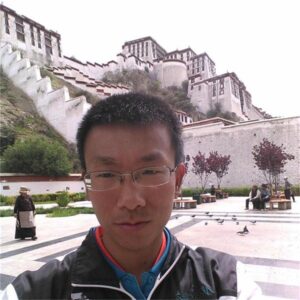In the LED application, attention should be paid to the specifications of anti-moisture and pouring. The IP (INTERNATIONAL PROTECTION) protection level system is drafted by the IEC (INTERNATIONAL ELECTROTECHNICAL COMMISSION). The lamps are classified according to their dustproof and moisture-proof characteristics. The foreign objects referred include tools, and human fingers should not touch the live parts of the lamp to avoid electric shock. The IP protection level is composed of two digits. The first number indicates the level of the lamp from dust and foreign objects intrusion. The second number indicates the degree of airtightness of the lamp against moisture and water intrusion. The larger the number, the higher the protection level.
Definition of the first sign number:
0 No protection: There is no special protection for people or things in the outside world.
1 Prevent the intrusion of solid objects larger than 50mm: prevent the human body (such as the palm) from accidentally touching the parts inside the lamp. Prevent foreign objects of larger size (diameter greater than 50mm) from invading.
2. Prevent the intrusion of solid objects larger than 12mm: Prevent people’s fingers from touching the parts inside the lamp to prevent the intrusion of medium-sized (diameter larger than 12mm) foreign objects.
3. Prevent the intrusion of solid objects larger than 2.5mm: prevent the intrusion of tools, wires or similar details with a diameter or thickness larger than 2.5mm and small foreign objects to contact the parts inside the lamp.
4. Prevent the intrusion of solid objects larger than 1.0mm: prevent the intrusion of tools, wires or similar small foreign objects with a diameter or thickness larger than 1.0mm and contact the parts inside the lamp.
5. Dustproof: Completely prevent the intrusion of foreign objects. Although it cannot completely prevent dust from entering, the amount of intruding dust will not affect the normal operation of the lamp.
6 Dustproof: completely prevent foreign objects from entering, and can completely prevent dust from entering.
Definition of the second sign number:
0 no guard
1 Prevent dripping water intrusion: Vertically dripping water droplets (such as condensed water) will not cause harmful effects to the lamp.
2. It can still prevent the intrusion of dripping water when it is inclined at 15 degrees: when the lamp is tilted from vertical to 15 degrees, dripping water will not cause harmful effects to the lamp.
3. Prevent the intrusion of sprayed water: rainproof, or prevent the water sprayed in the direction with an included angle of less than 60 degrees from the vertical from entering the lamp and causing damage.
4. Prevent splashing water from entering: prevent water splashing from all directions from entering the lamp and causing damage.
5. Prevent the intrusion of jetted water: Prevent water from all directions from entering the lamp and cause damage.
6. Prevent the intrusion of large waves: The lamps installed on the deck can prevent damage caused by the intrusion of large waves.
7. Prevent the intrusion of water when immersed in water: The lamp can be immersed in water for a certain period of time or the water pressure is below a certain standard to ensure that it will not be damaged due to water ingress.
8. Prevent the intrusion of water during submersion: The lamp can be submerged indefinitely under the specified water pressure, which can ensure that it will not be damaged due to water ingress.
IEC standard is the abbreviation of IEC International Electrotechnical Commission Standard:
Founded in 1906, the International Electrotechnical Commission (IEC) is the world’s earliest non-governmental international electrotechnical standardization organization and a Class A advisory organization of the United Nations Economic and Social Council (ECOSOC). After ISO was established in 1947, IEC was incorporated into ISO as an electrical department, but it still maintained its independence technically and financially. According to the new agreement between ISO and IEC in 1976, both organizations are legally independent organizations. IEC is responsible for international standardization work in the fields of electrical engineering and electronics, and ISO is responsible for other fields. At present, IEC member countries include the vast majority of industrially developed countries and some developing countries. These countries account for 80% of the world’s population, 95% of the world’s electricity production and consumption, and 90% of the world’s production and use of electrical and electronic products. The purpose of IEC is to promote the international unification of electrical standards, international cooperation in standardization and related aspects in the field of electrical and electronic engineering, and to enhance international mutual understanding. For this purpose, various publications, including International Standards, are published, and it is hoped that the National Committees will use these International Standards as their national conditions permit. IEC’s fields of work include electrotechnical technology in electricity, electronics, telecommunications and atomic energy.
The highest authority of the IEC is the Council. There are currently 53 member states, called IEC National Committees, and each country can only have one body as its member. Each member state is a member of the council, and the council meets once a year, called the IEC annual meeting, which is held in each member state in turn. The Executive Committee handles matters assigned by the Council. The technical work of IEC is in charge of the Executive Committee (CA). In order to improve work efficiency, the Executive Committee is divided into three groups, A, B, and C, which deal with coordination issues in standard formulation work in different fields at the same time. IEC currently has 104 technical committees and 143 sub-technical committees. IEC has three certification committees, one is the Electronic Components Quality Evaluation Committee (IECQ), the other is the Electronic Safety Certification Committee (IECEE), and the other is the Explosion-Proof Electrical Certification Committee (IECEX). In order to formulate relevant certification criteria uniformly, IEC also established a Conformity Assessment Board (CAB) in 1996, which is responsible for formulating a series of certification and accreditation criteria including system certification.

